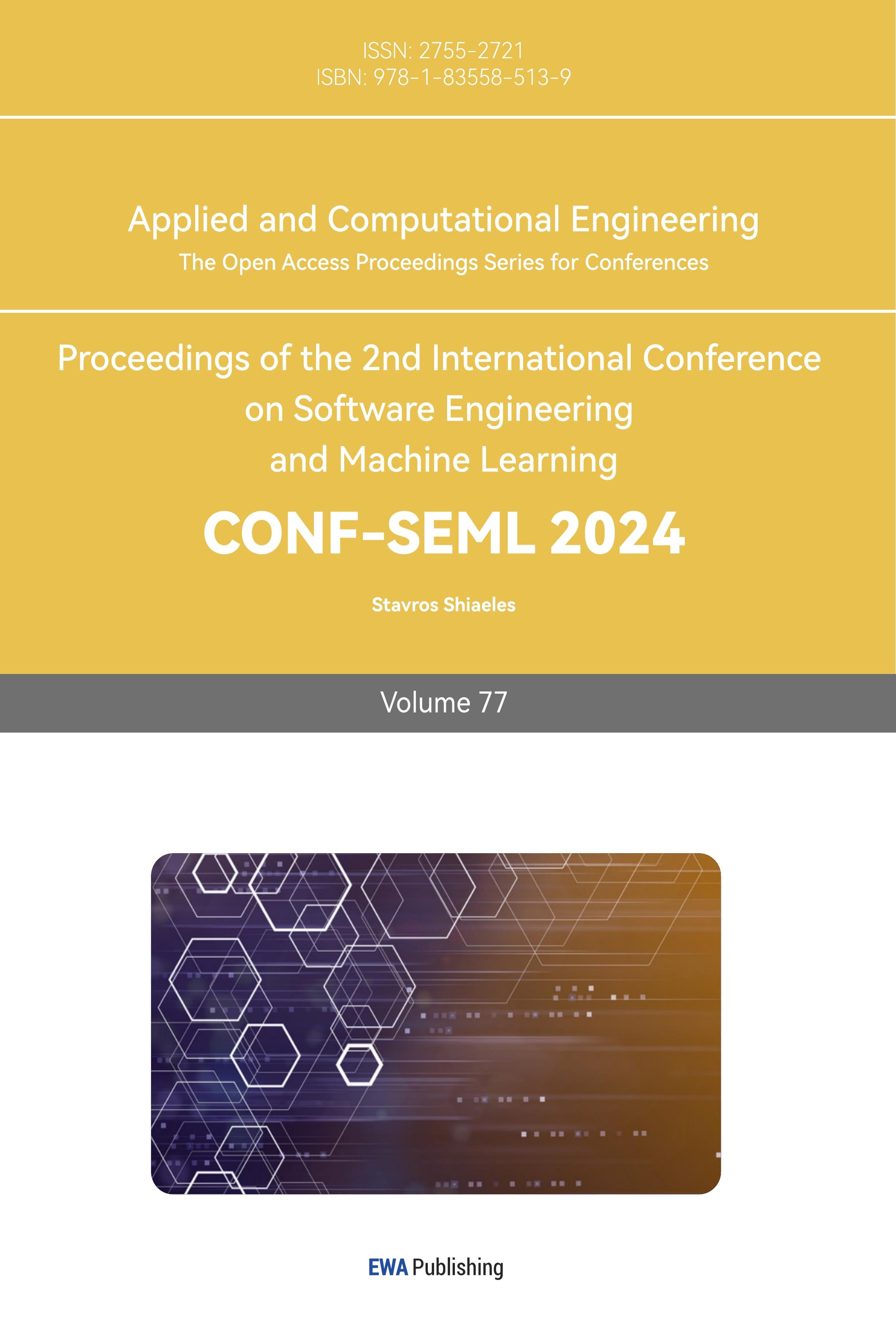1. Introduction
In November, 2022, ChatGPT (Chat Generative Pre-trained Transformer) , developed by OpenAI in United States, capable of generating human-like-text and involving natural languages in conversation, stands as a beacon of AI prowess. The integration of artificial intelligence (AI), epitomized by ChatGPT, into User Interface (UI) design has ushered in a new era of innovation and efficiency. Many UI designers began to use ChatGPT to help them, including giving advice, generating interface images, simulating conversations with designers and users, and producing feedback to designers. Despite everything, there are still a few imminent challenges to involving AI in UI design, such as ensuring design quality and protecting design creativity. Besides, the biggest concern about AI comes from the fear that designers will be unemployed with ChatGPT’s rise. This paper provides some detailed examples of how AI helps designers to work more effectively and what challenges and potential risks it brings, analyzes some of the published papers, and discusses the influence of AI on the UI design industry.
2. The definition of User Interface design and application of ChatGPT in UI design
An authoritative definition of UI design can be found through the Interaction Design Foundation (IxDF), which describes User Interface (UI) Design as follows: "User interface (UI) design is the process designers use to build interfaces in software or computerized devices, focusing on looks or style. Designers aim to create interfaces which users find easy to use and pleasurable. UI design refers to graphical user interfaces and other forms—e.g., voice-controlled interfaces."[1]
There is no doubt that the appearance of AI models like ChatGPT has had a huge impact on the UI design industry. First, as a digital tool capable of generating human-like text and involving natural languages in conversation, ChatGPT can help designers quickly generate space text, help documents, user interface prompts, and other text content in many languages. Second, by analyzing the description or design principles of user interface design, ChatGPT can provide preliminary design feedback to help designers identify potential user experience issues. Also, based on the objectives and functional requirements of the user interface, ChatGPT can make specific suggestions to improve the user experience and interface aesthetics. Third, after designers get the user usability test results, ChatGPT is able to analyze these data, and give a summary in few seconds to help designers better understand their prototypes’ pros and cons, and improve their work.
he ability above is just generating suggestions, giving feedback, or making summaries without involving the design process directly. The following several ChatGPT features are even more astounding. On March 15, 2023, OpenAI launched ChatGPT4. On the basis of ChatGPT3.5, ChatGPT4’s model not only expands its own learning scope to make the generated text more accurate, but also adds new plug-ins such as an image generator, a website maker, and a programmer. This means ChatGPT can directly generate the design sketch from the designers’ brief descriptions of their needs. According to Figure 1, a prototype generated by ChatGPT proves that they can directly generate beautiful images to satisfy their users in a few seconds. Moreover, it can even automatically generate HTML, CSS, or other front-end code based on the designer’s description, accelerating the transition process from design to prototype, providing developers with answers to questions encountered when coding, and helping to understand and fix bugs that appear during the UI implementation.
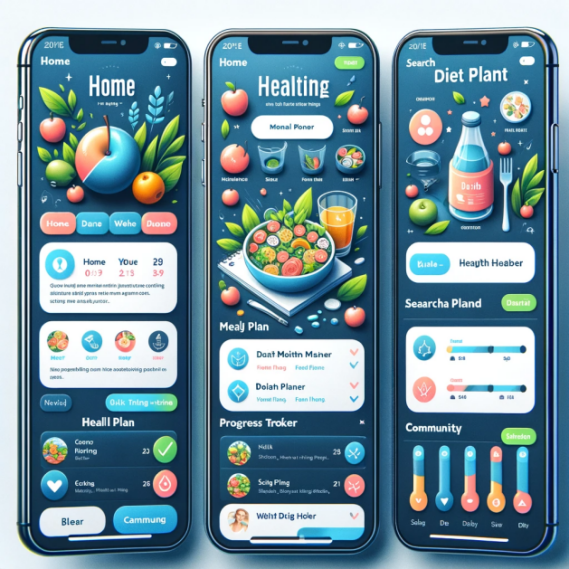
Figure 1. a prototype ChatGPT generated of a app which can help people to have a healthy diet
Currently, OpenAI is still working on the ChatGPT; it is very likely that ChatGPT will have more advanced features in the future, and there will have more application of ChatGPT in UI design.
3. How can AI like ChatGPT change the way of UI design?
In the current digital age, ChatGPT, as a revolutionary AI technology, is influencing the UI design industry in an unprecedented way. By providing inspiration and technical guidance, ChatGPT enables designers to explore new creative boundaries, while providing professional advice through their deep learning capabilities to help designers avoid common pitfalls. In addition, its applications in improving the user experience and interaction design make the creation of intuitive and attractive interfaces more efficient and accurate. ChatGPT By understanding user needs and preferences, designers provide specific suggestions for improving the design. Finally, its contribution to improving productivity cannot be ignored, and ChatGPT automates routine tasks, enabling designers to focus more on creative work. Overall, ChatGPT is becoming a key force driving the progress of the UI design industry.
3.1. Providing inspiration and innovation
In the field of UI design, the importance of creativity and inspiration is self-evident. Designers not only need to focus on the aesthetics of the interface, but also ensure the intuitive and smooth user experience. However, faced with urgent project timelines and constantly changing design trends, even the most talented designers sometimes encounter situations where inspiration runs out. At this point, ChatGPT can become a powerful assistant for designers, stimulating creativity through various means, providing inspiration, and helping them break through their thinking limitations and find innovative solutions.
ChatGPT can provide customized creative suggestions and sources of inspiration based on the needs of designers and the specific background of the project. It can simulate the perspectives of different users and propose specific suggestions to improve the user experience; it is capable of providing design concepts that meet current market demands based on the latest design trends; it can also analyze complex design problems and provide feasible solutions. More importantly, ChatGPT can provide services 24/7, providing immediate support whenever designers need assistance.
Here are three specific examples of how ChatGPT can provide inspiration and ideas for UI designers:
3.1.1. Generate design concepts and themes. If designers need to design UI for an environmentally friendly mobile application, but lack specific visual concepts, ChatGPT can provide theme inspiration (propose various design concepts based on environmental themes, such as using the shapes of natural elements, green and blue color schemes, etc., to emphasize the environmental characteristics of the application.); suggested design style (Based on current trends, ChatGPT may suggest using flat designs, subtle shadow effects, or gradient colors to attract the target user group.); and propose interface elements, such as incorporating renewable energy icons, environmental information tips, or interactive tutorials on low-carbon living into the UI. For example, in figure 2, when we ask ChatGPT how to make a specific visual concept, ChatGPT will begin to provide a list of advice.
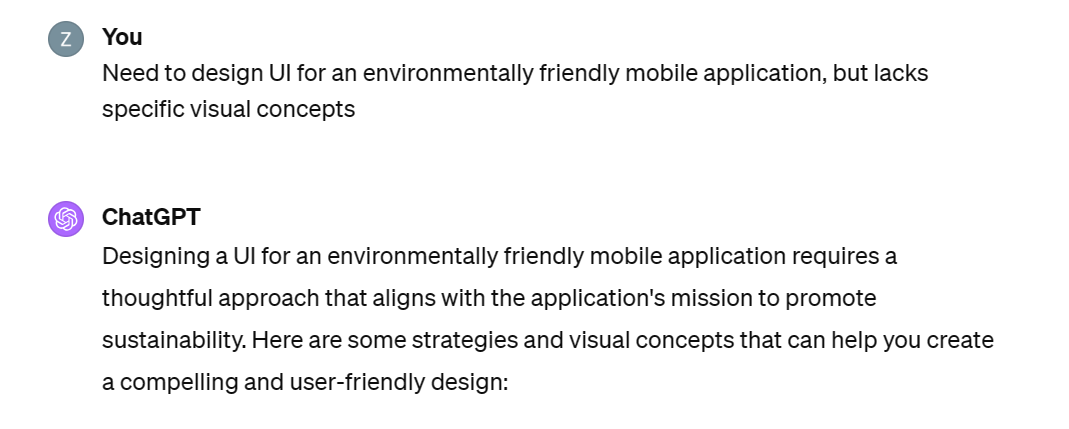
Figure 2. an example to illustrate how can ChatGPT provide suggestions about design concepts and themes
3.1.2. Provide copywriting and language suggestions. If designers need attractive and encouraging copy to enhance the user experience when designing an interface for a new health tracking application, ChatGPT’s function includes giving suggestions for generating copy (provide concise and inspiring copy for application homepages, prompt messages, or achievement unlocking scenarios); providing a unified language style (helps designers ensure consistent language style throughout the entire application, whether it is formal, friendly, or motivational, that can run through the user's usage process.); and offering cultural suitability advice (for applications targeting multiple markets, ChatGPT can also provide language advice on different cultural backgrounds to avoid cultural misunderstandings).
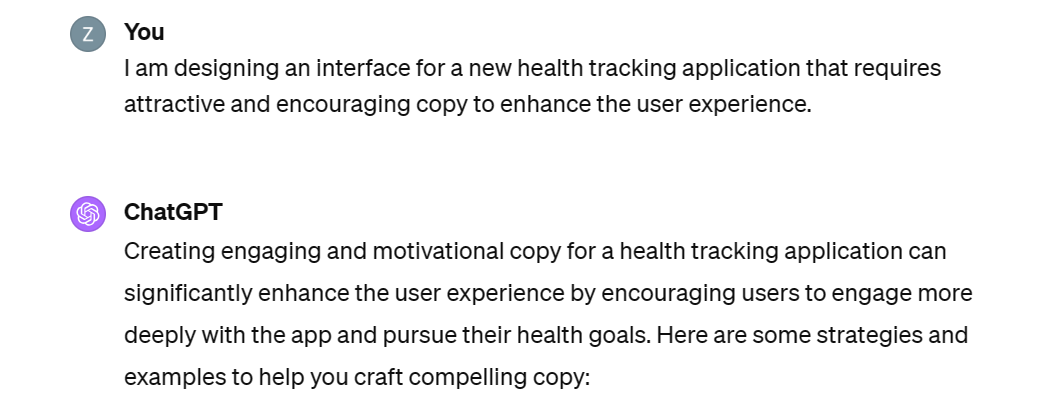
Figure 3. an example about how can ChatGPT to provide copywriting for UI designers
3.1.3. Solve design issues and provide technical guidance. If designers encountered challenges in layout and data visualization when creating a complex dashboard interface. ChatGPT’s functions are providing layout solutions (ChatGPT can provide different layout suggestions based on user needs and interface functional goals, such as grid systems, F-shaped or Z-shaped line of sight paths, to enhance the user experience.); offering suggestions for data visualization (for interfaces that display large amounts of data, ChatGPT can propose using different data visualization methods such as bar charts, line charts, and heatmaps). It also suggests how to distinguish different datasets through color and shape, making information clear at a glance, and giving technical solutions. (When designers face technical implementation issues, ChatGPT can also provide CSS and JavaScript coding suggestions or recommend existing frameworks and libraries to help designers achieve complex design effects.) For instance, according to Figure 4, it is clear that chatGPT has already had the capability to provide technical solutions in detail and output direct codes to solve technical problems.

Figure 4. an example to illustrate how can ChatGPT to help designers to solve technical problems
3.2. Improving user experience and interaction design
ChatGPT, a leading artificial intelligence technology, provides powerful natural language processing (NLP) capabilities, making it a valuable resource for designers in the design process. In multiple stages of user experience (UX) and user interface (UI) design, from conceptualization to implementation, and then to user testing, ChatGPT can provide critical support and insights. It can not only help designers obtain design inspiration and suggestions, but also assist in in-depth user research, optimize product interaction language and content strategies, thereby improving efficiency and effectiveness throughout the entire design process. By interacting with ChatGPT, designers can better understand user needs, explore innovative design solutions, and optimize the user interaction experience.
Firstly, ChatGPT can assist designers in conducting extensive research in the early stages of a project, including analyzing industry trends, competitor products, and target user group characteristics. These pieces of information are crucial for developing effective design strategies. By asking ChatGPT related questions, designers can quickly obtain a wealth of information and insights, which may take hours or even days to collect and analyze from traditional research channels. Also, ChatGPT can analyze data to predict user behavior, evaluate the results of user testing, and forecast the success of a design solution. This predictive insight allows designers to make informed decisions, tailoring their designs to better meet user needs and expectations.[2]
Moreover, ChatGPT can serve as an instant feedback tool when designers start conceptualizing and prototyping. Designers can use it to test different design concepts or language usage to see which ones are most effective in conveying information and attracting users. This real-time feedback mechanism allows designers to quickly iterate and improve their designs without waiting for the formal user testing phase. Beside, designers can also simulate the roles of different users through ChatGPT for role-playing, in order to better understand the needs and challenges of users. This helps designers consider the perspectives and experiences of different users during the design process.
Furthermore, ChatGPT plays an important role in creating a more humane and personalized user experience. Designers can use it to generate customized user stories or scenarios, which helps design teams gain a deeper understanding of their target users and consider their specific emotions and needs in their designs. In addition, ChatGPT can assist designers in maintaining clear and efficient communication in complex project management and team collaboration, ensuring that team members have a common understanding of project goals and progress by generating communication materials such as project updates, meeting minutes, or task assignments.
3.3. Improving design efficiency
In today's rapidly developing digital age, UI designers are facing unprecedented challenges and opportunities. As users' expectations for interface design grow, designers need not only to innovate, but also to deliver high-quality design works in a tight time. In this context, AI technologies, especially high-level language models like ChatGPT, are becoming an important tool for UI designers to improve productivity and creativity. By understanding natural language, ChatGPT can have interactive conversations with designers, providing a full range of support, from design inspiration, fast copy generation, to design feedback and user research assistance. This article will explore how ChatGPT uses these approaches to help UI designers improve their design efficiency, so that they are able to respond more quickly to market demand, improve the user experience, and ultimately drive innovation and development in the design community. There are several aspects of how ChatGPT can help designers improve their efficiency.
Design inspiration and creativity: ChatGPT can provide design inspiration and creative support. Designers can discuss with ChatGPT the latest design trends, UI design principles, or industry-specific UI design cases to inspire new design ideas.
Rapid copy quickly: UI design is not only about visual elements, but also effective copywriting. ChatGPT Can help designers to quickly generate or edit button text, prompt messages, error messages and other UI copy, improve the efficiency of copy creation.
Provide design feedback and advice: While ChatGPT cannot completely replace the feedback from professional designers, it can provide preliminary design feedback based on design principles. It can generate countless design ideas, point out possible flaws in design concepts, and even simulate user feedback on prototypes[2]. This feedback can help designers identify potential problems early on and reduce the number of iterations later on.
Assist user research: UI designers can use ChatGPT to assist user research, such as by generating user interview questions, creating user portraits, or simulating user scenarios, to better understand the needs and behaviors of target users.
Facilitate teamwork: In multi-player design projects, ChatGPT can help improve communication efficiency between team members. Designers can use ChatGPT to quickly write project updates, feedback summaries, or meeting minutes to ensure that information is synchronized among team members.
Automation and Scriting Support: For repetitive or standardized design tasks, ChatGPT can provide advice on automated scripts or instructions to help designers save time and devote more energy into creative and innovative work.
Learning and Resource Access: ChatGPT can also serve as an instant learning resource to help designers access the latest UI design tools, technical tutorials, and industry reports to support their continuous learning and growth.
Provide a basic grayscale or prototype for designers: Designers can use plugins like image generator to create a basic grayscale or prototype of an app, and adjust this grayscale or prototype becoming a final product. For instance, figure 5—which contained a grayscale and two prototypes of a dating app generated by ChatGPT—proves that ChatGPT can generate helpful images to help designers.
A:  B:
B:  C:
C: 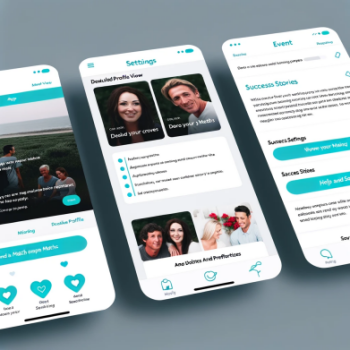
Figure 5. a grayscale and two prototypes of a dating app generated by ChatGPT to demonstrate how can ChatGPT to help improve efficiency
5A: a gray scale generated by ChatGPT of a page of a dating app
5B: a prototype generated by ChatGPT of three pages of a dating app
5C: a prototype generated by ChatGPT of three pages of a dating app
4. Challenges brought by ChatGPT to UI design industry and solutions of them
With the rapid development of artificial intelligence technology, advanced AI tools like ChatGPT have brought unprecedented convenience to the UI design industry. However, the rise of these technologies also brings a number of challenges that are deeply affecting how designers work, design processes and even the whole UI design industry. First, the ability to generate design prototypes and code, while improving design efficiency, also causes a reassessment of the designer's value. Secondly, the application of AI tools in the design process requires designers to learn new skills in order to effectively cooperate with AI. In addition, as AI technology is more and more used in design and creation, how to ensure the originality and personality expression of design works has also become an urgent problem. The most worrying topic is whether human UI designers will be replaced by ChatGPT. This section will explore these challenges that ChatGPT brings to the UI design industry and discuss how designers address these challenges to leverage the opportunities presented by AI technology while maintaining the core values and creativity of design work.
The automation capabilities of ChatGPT may render certain professions obsolete, particularly those involving routine text-writing tasks.[3] Moreover, language generation techniques can be used to generate standardized conversations and responses, which may make some UI design work more template and reduce the need for customization. Next, plugins like the image generator in ChatGPT can generate images of prototypes of apps directly; this leads people to contemplate whether professional UI design should be wholly replaced. Finally, some older designers may not be so familiar with their own kinds of new technologies, which means they are more likely to be phased out by the times.
However, the paper believes that the existences of these problems are not able to hamper the trend of using AI in UI design industry. This statement may not align with the intuition of many people today, yet by comparing our current situation with that of people during the Industrial Revolution, we will arrive at a more positive conclusion. As Carl Benedikt Frey, the author of The tech trap:Capital, Labor, and Power in the Age of Automation, points out, historical resistance and concerns about technological change, like Luddite Rebellion in early 19 century [4], the introduction of the car was with the response of the carriage drivers and the automation and modern employment worries filled with history of mankind. It is true that the first and second industrial revolution in history brings some tragedies to the world (just like Joseph Schumpeter said, capitalism without bankruptcy is like Christianity without hell. [5]), but we cannot imagine to live in a world without the facilities created by these revolutions. This time probably will be teh same, because while some jobs may disappear from automation, new technologies can also create new jobs and needs. AI brings chances for designers, if designers can make the following changes, they will be more likely to succeed.
The most important for designers to do is focusing on creative and strategic work. UI designers can focus more on creative design work and strategic planning, parts that are hard to replace. For example, they can focus more on user experience design, brand building, and user research, which require human creativity and insight, improving skills and learning new technologies is also crucial. This includes understanding the basics of NLP technologies and how to apply them to design work, such as improving productivity through automatically generated copywriting, or designing smarter user interfaces to interact with robots. Using AI like a tool, instead of a successor.
Finally, working with technical teams can be helpful. UI designers can cooperate with technical teams actively to explore how to integrate AI technology into products and services to enhance user experience and product competitiveness. By working closely with the technical team, they can better understand the potential and limitations of the technology and better meet the challenges posed by technological development.
Therefore, even though the existence of AI like ChatGPT brings some challenges for UI designers, as long as designers can improving skills and cooperating which technical teams, they can still play an important role in UI design industry.
5. Conclusion
With the development of ChatGPT, the UI design industry is standing on the edge of an unprecedented change, facing a future full of infinite possibilities. Artificial intelligence not only redefines the efficiency of the design process, making creativity and experimentation a part of designers' daily life, but also provides a new way to achieve a personalized user experience. Looking ahead, we can foresee a more collaborative, dynamic, and interconnected design ecosystem in which designers, developers, and AI tools will work together to push the boundaries of UI design. Of course, there are still some potential risks and challenges brought by chatGPT to the UI design industry; however, none of them can be a reason for us to avoid embracing the technology revolution. Actually, by improving skills, learning new technologies, and focusing on creative work, most designers can still maintain their job in this industry. Combined with the development of AI, the future of UI design will be even brighter.
This paper is based on some existing materials and the author's personal understanding of ChatGPT. It also touches upon a question for which no one has yet been able to provide a long-term, definitive answer. Therefore, the discussions and conclusions in this article may deviate from future developments.
References
[1]. Interaction Design Foundation. (n.d.). What is User Interface (UI) Design? Retrieved from https://www.interaction-design.org/literature/article/what-is-user-interface-ui-design
[2]. Wiberg, M., & Stolterman Bergqvist, E. (2023). Automation of interaction—interaction design at the crossroads of user experience (UX) and artificial intelligence (AI). Personal and Ubiquitous Computing, 27(6), 2281-2290.
[3]. Farina, M., & Lavazza, A. (2023). ChatGPT in society: emerging issues. Frontiers in Artificial Intelligence, 6, 1130913.
[4]. Frey, C. B. (2019). The technology trap: Capital, labor, and power in the age of automation. Princeton University Press.Schumpeter.
[5]. J. A. (2013). Capitalism, socialism and democracy. routledge.
Cite this article
Zhang,R. (2024). The impact of artificial intelligence represented by ChatGPT on UI design. Applied and Computational Engineering,77,56-62.
Data availability
The datasets used and/or analyzed during the current study will be available from the authors upon reasonable request.
Disclaimer/Publisher's Note
The statements, opinions and data contained in all publications are solely those of the individual author(s) and contributor(s) and not of EWA Publishing and/or the editor(s). EWA Publishing and/or the editor(s) disclaim responsibility for any injury to people or property resulting from any ideas, methods, instructions or products referred to in the content.
About volume
Volume title: Proceedings of the 2nd International Conference on Software Engineering and Machine Learning
© 2024 by the author(s). Licensee EWA Publishing, Oxford, UK. This article is an open access article distributed under the terms and
conditions of the Creative Commons Attribution (CC BY) license. Authors who
publish this series agree to the following terms:
1. Authors retain copyright and grant the series right of first publication with the work simultaneously licensed under a Creative Commons
Attribution License that allows others to share the work with an acknowledgment of the work's authorship and initial publication in this
series.
2. Authors are able to enter into separate, additional contractual arrangements for the non-exclusive distribution of the series's published
version of the work (e.g., post it to an institutional repository or publish it in a book), with an acknowledgment of its initial
publication in this series.
3. Authors are permitted and encouraged to post their work online (e.g., in institutional repositories or on their website) prior to and
during the submission process, as it can lead to productive exchanges, as well as earlier and greater citation of published work (See
Open access policy for details).
References
[1]. Interaction Design Foundation. (n.d.). What is User Interface (UI) Design? Retrieved from https://www.interaction-design.org/literature/article/what-is-user-interface-ui-design
[2]. Wiberg, M., & Stolterman Bergqvist, E. (2023). Automation of interaction—interaction design at the crossroads of user experience (UX) and artificial intelligence (AI). Personal and Ubiquitous Computing, 27(6), 2281-2290.
[3]. Farina, M., & Lavazza, A. (2023). ChatGPT in society: emerging issues. Frontiers in Artificial Intelligence, 6, 1130913.
[4]. Frey, C. B. (2019). The technology trap: Capital, labor, and power in the age of automation. Princeton University Press.Schumpeter.
[5]. J. A. (2013). Capitalism, socialism and democracy. routledge.





